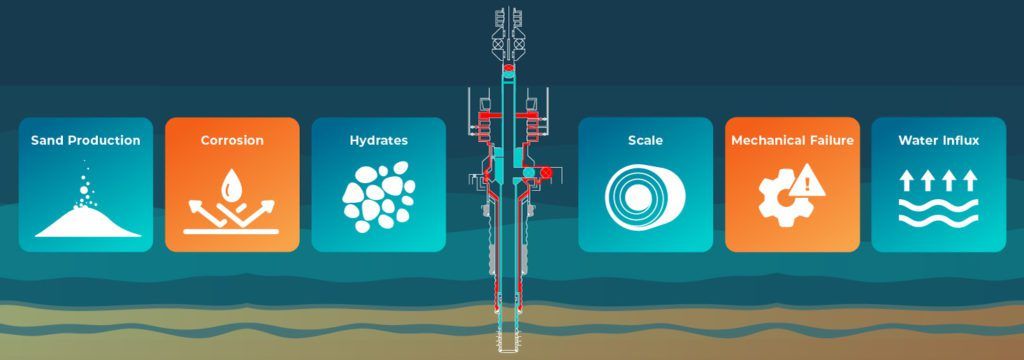Enhance your BOP Reliability through Industry Collaboration
Maximize BOP assurance and mitigate risks including unplanned BOP stack pulls through collaboration and technology.
Watch On Demand
Technological advances in offshore drilling have aided in overcoming well intervention challenges, increasing the number and total depth of wells drilled in deep and ultra-deep water. Drilling in deeper water and at greater depths increases operators’ risk and reduces the margin of error regarding the protection of people and the environment. During drilling and completion of wells, IPT provides products and services that help assure well integrity and avoid well interventions to repair critical well components. However, as the number and age of deepwater wells increase, the need for interventions increases as well due to the onset of other conditions like sand production, corrosion, hydrates, scale, mechanical failure, and water influx. Each intervention is costly, and its outcome is uncertain. When interventions are necessary, IPT’s products and services also provide well integrity assurance.
Learn the risks and challenges faced by operators and intervention service companies when the decision is made to repair damaged or underperforming deepwater wells.

A well intervention involves taking the well offline and breaking the primary barrier of the subsea infrastructure and potentially the secondary barrier as well. The subsea infrastructure may have degraded after years on the sea floor. A single intervention costs millions of dollars and the cause of the well problem may not be completely known when the intervention process starts. Therefore, re-entering a previously secure well in extreme conditions introduces additional risk to people, the environment, assets, and the operator’s reputation.
When intervention becomes necessary, the operator is focused on managing the cost of reestablishing production while maintaining safety and regulatory compliance. The cost and complexity of interventions are directly proportional to water depth as it determines the size of the intervention vessel and crew required. The intervention crew typically visits multiple well locations for various operators on a single tour to maximize the operational functionality of the vessel. Although this complicates scheduling of the vessel, it allows the cost of intervention services to be split across operators, reduces the travel time to each well, and minimizes port and duty costs.
Due to cost and scheduling complexity, operators want to avoid repeating the intervention process and suffering lost production again for a given well. The operators want to ensure the intervention tools and well control components work properly prior to connecting to the well. After the intervention, the operator also needs traceability of all integrity tests to hand off to the production team and to have an auditable trail of compliance for local regulatory bodies.
Integrity testing of well components during interventions presents different challenges as opposed to testing during well construction. An intervention may only last a couple of weeks, so component integrity tests are performed more frequently than during well construction. Many offline integrity tests are performed simultaneously on the deck of the intervention vessel to eliminate delays once the crew connects to the well. During intervention, integrity tests must be performed thoroughly and efficiently because any avoidable delay in critical path operations would be costly for both the intervention service company and the operator. The final test in the intervention process is the inflow (negative) test on the surface-controlled subsurface safety valve (SCSSV), a critical component that provides fail-safe closure to prevent uncontrolled flow in the case of catastrophic damage to wellhead equipment. A major challenge in the industry has been the lack of consistent test criteria by which to determine if the final inflow test passes or fails. This leads to inconsistent test results across rigs.
Post intervention, communication between the intervention service company and the production operations crew about the status of the well and the integrity of the well components is critical to a successful handover. Many problems and accidents have occurred due to poor handover documentation or communication. The intervention service company must provide accurate and comprehensive reports to all stakeholders.
IPT’s products and services perform and track integrity tests on well components, ensuring transparency during handover between intervention and production stages, and providing an auditable trail should any forensic work be required. Contact us to learn more about how IPT’s products and services assure the success of well interventions.